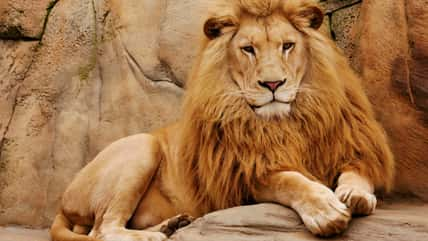The Rarest Wild Dog In The World Is Now The First Large Carnivore Caught Feeding On Nectar

When you think of pollinators, the classic three—bees, birds, bats—probably are what come to mind. But sometimes, a carnivore may help out with the job.
Researchers at the Ethiopian Wolf Conservation Program (EWCP) have observed a new behavior of the Ethiopian wolf, the rarest wild dog in the world.
It may be the first known large carnivore to practice pollination. This is also the first time that a large meat-eating predator has been observed feeding on nectar.
In a new study, a team of researchers witnessed Ethiopian wolves licking Ethiopian red hot poker flowers for their sweet nectar.
Some of the wolves visited as many as 30 blooms in just one trip. Different wolves from different packs were also seen feeding on the nectar.
When the wolves drink up the nectar, their muzzles become covered in pollen, which they could transfer to other flowers as they move around to feed.
“These findings highlight just how much we still have to learn about one of the world’s most threatened carnivores,” said Dr. Sandra Lai, the lead author of the study and a scientist based at the University of Oxford.
“It also demonstrates the complexity of interactions between different species living on the beautiful Roof of Africa. This extremely unique and biodiverse ecosystem remains under threat from habitat loss and fragmentation.”
There are less than 500 Ethiopian wolves among 99 packs left in the wild. Agriculture and various diseases have taken a toll on their population.

Sign up for Chip Chick’s newsletter and get stories like this delivered to your inbox.
These animals live in the Ethiopian highlands and prey on smaller creatures like giant mole rats and common grass rats. They tend to form packs, but they mostly hunt on their own.
The researchers documented the wolves’ nectar-feeding behavior over the course of four days in May and June of last year. They followed six different wolves and saw that the canines would approach a flower stalk and lick the blossoms at the bottom. They paid more attention to the more mature flowers that contained the most nectar.
According to Lai, it is very unusual for large carnivores to engage in nectar-feeding since they do not have a long tongue, a specialized snout, or other physical characteristics that would make it easier for them to do so.
In addition, the majority of flowers are too fragile or contain too little nectar for larger animals to be drawn to them. All six of the wolves drank nectar, but one female individual visited 30 blooms during one feeding session.
There is also evidence of social learning, with some juveniles accompanying adults to flower fields. The nectar of the Ethiopian red hot poker is very sweet, and the wolves seemed to be really enjoying themselves.
The researchers suggest that the nectar might just be a sweet treat for the wolves, not an actual source of nutrition. It’s like their go-to dessert after hunting meat for dinner.
Moving forward, the research team hopes to determine just how much pollination the wolves are doing. More conservation efforts are needed to protect the wolves and flowers, especially since no such interaction can be seen anywhere else in the world.
The study was published in the journal Ecology.
More About:Animals





